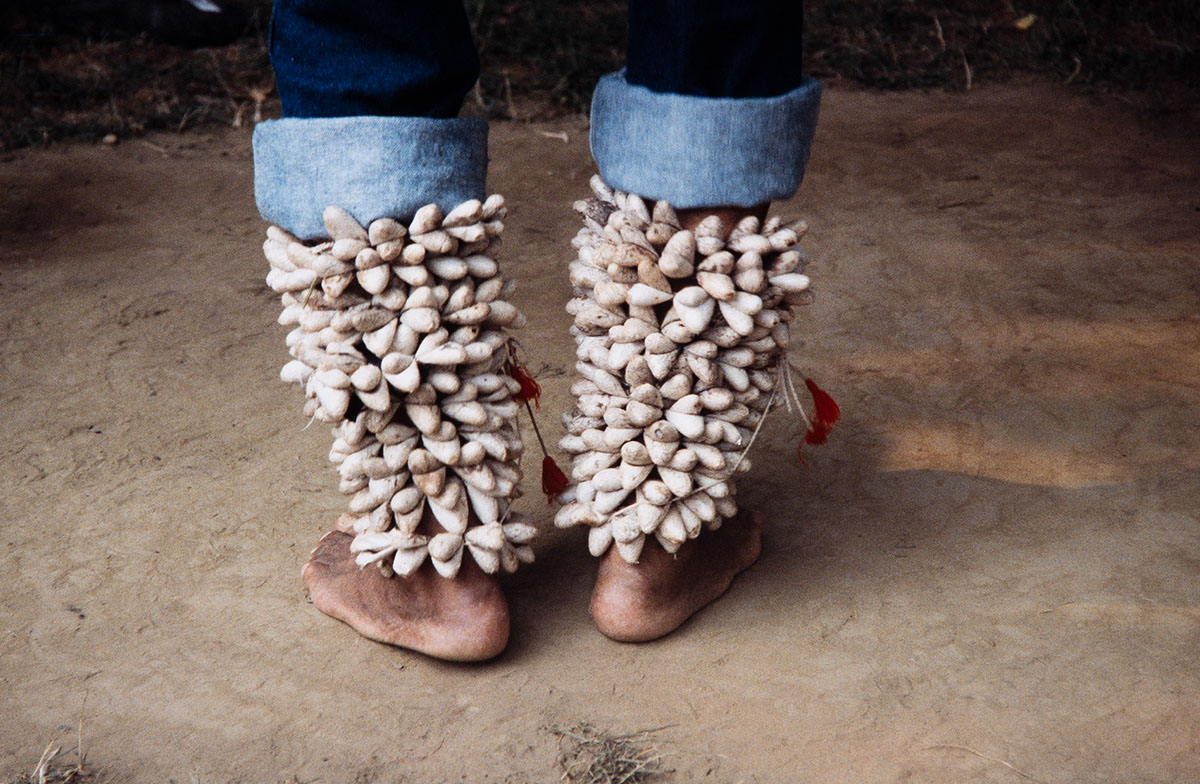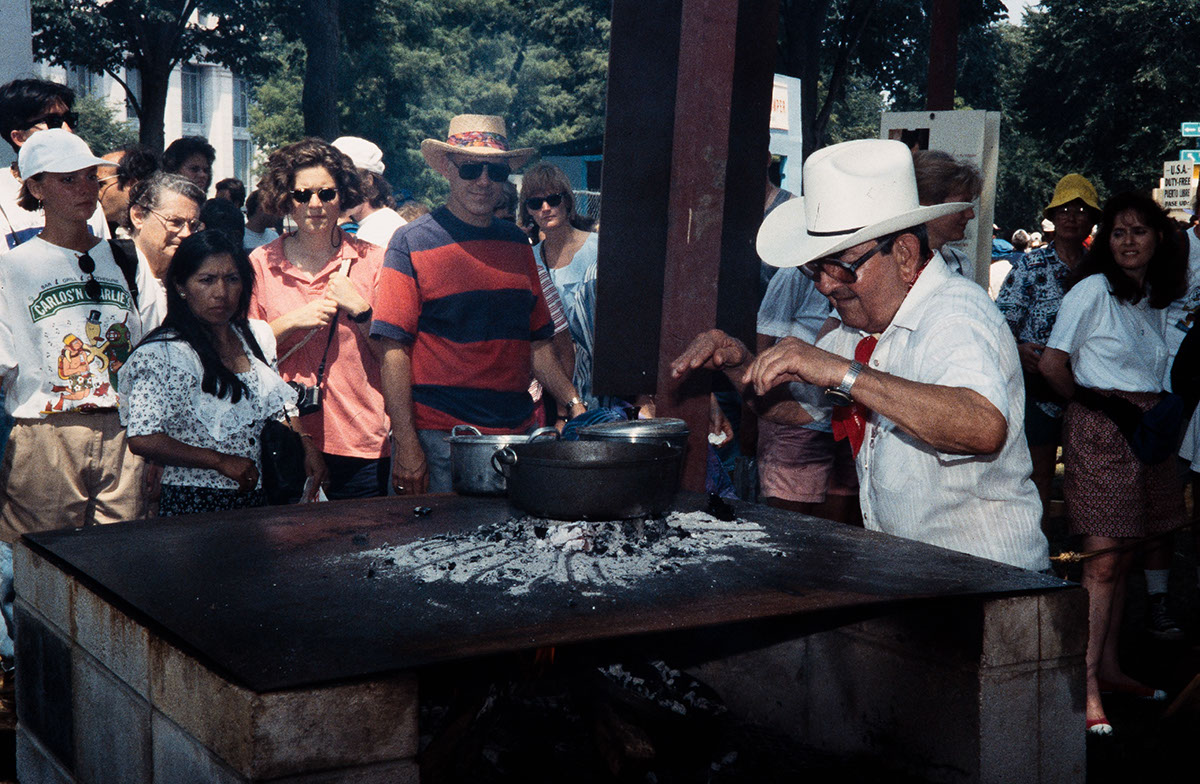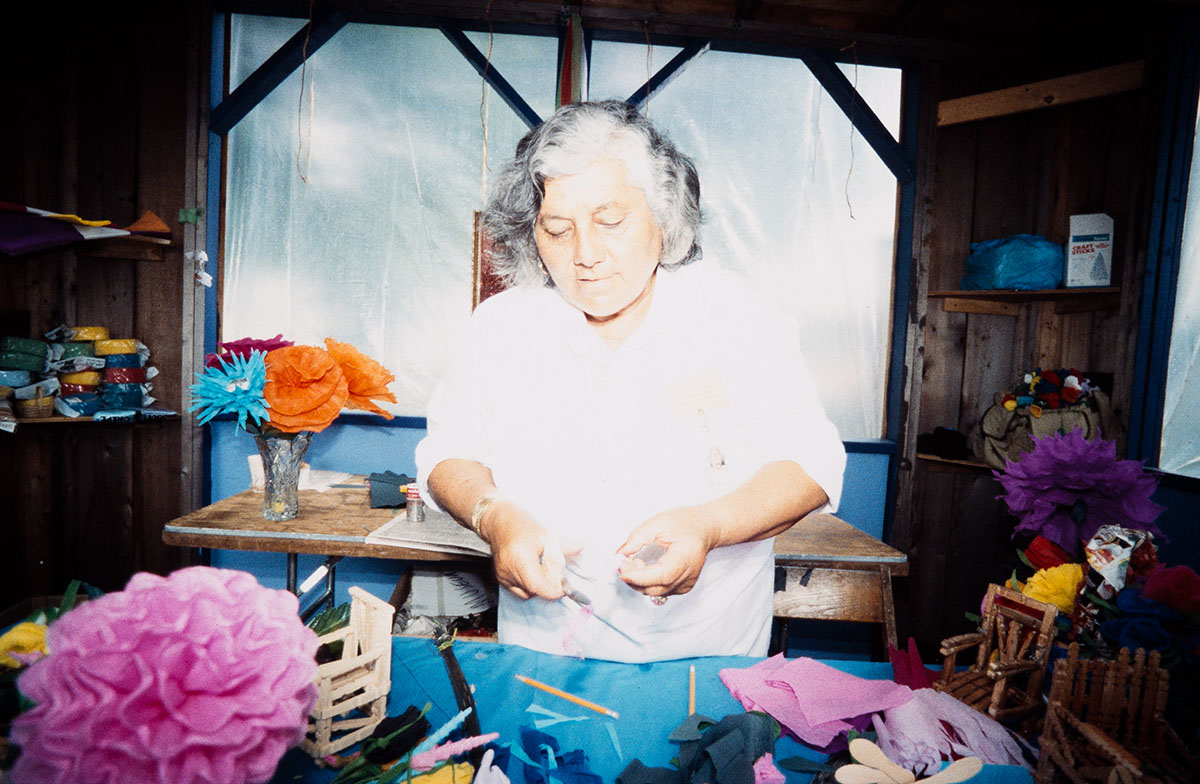Based on research in the rich and dynamic living culture of the border, the Borderlands Festival program of 1993 was designed to provide a glimpse of the border - its histories, its diverse communities, local and regional identities, and its music, arts, crafts, healing practices, foodways, and narrative. The program was about community-based culture. It presented cultural practices found on the border and cultural expressions about the border, and it explored cultural patterns that were created by the border. It also addressed the cultural heritage, adaptability, and creativity of Native Americans and of the Mexican, Hispanic American, Anglo, and other immigrant communities that have played a part in creating the life that surrounds the Mexico- U.S. border - those who maintain it, those who cross it, those who are left behind, and those who dwell in the border region. The program explored the processes through which such groups create, adapt, and preserve culture to meet the challenges of life on the border. It sought to present and understand community codes of behavior that evolved on the border including confrontation, evasion, violence, and romance, especially as these have been transformed into narrative and other forms of artistic expression.
Music performances at the Festival included emergent forms such as the conjunto, which grew out of the interaction between different cultural communities; older forms, such as the corrido, which has been used to preserve a historical vision in the defense of disputed territory; and adapted forms such as the string band music now incorporated into the traditional repertoire of the Tohono O'odham Native American communities. Also featured in the program were five muralists, whose work reflects the traditions of Mexican cholo and United States Chicano muralism. Murals continue to be touchstones of common historical experiences, archaeologies of sociocultural movements, and powerful statements of identity, ethical principles, and community aspirations. The unique fusion of border aesthetics and handcrafted technology was embodied for Festival visitors in lowriders - distinctively customized automobiles. These lowslung, hopping cars complemented the iconography of murals as statements of cultural identity.
Vaqueros of south Texas demonstrated their skills, crafts, and foodways associated with their cowboy tradition, which dates back to the Spanish colonial era. A fisherman from the port of Brownsville demonstrated shrimping techniques. A Laredo blacksmith forged stirrups, belt buckles, and other implements of vaquero life, along with a number of traditional and contemporary decorative objects. A ropemaker demonstrated the use of the local fiber called lechuguilla (a fibrous plant of the agave family). While fine craft traditions like guitar- and furniture-making are not specific to the border, craftspeople have incorporated motifs and instruments native to the region, like the bajo sexto guitar. Other occupational groups characteristic of the border environment included federal Immigration and Naturalization Service (INS) agents who regulate movement across the border; coyotes and polleros, who help migrants evade immigration regulations; and workers in maquiladora assembly line industried. Narrative sessions focused on the culture of craft and occupation in the context of the border.
Artisans also demonstrated crafts used in the home and for special celebrations, including quilt-making, flower- and piñata-making, candlemaking, and reverse-painted glass. Participants prepared regional specialties, traditional foods served for fiestas, and offered a sampling of typical vaquero outdoor cooking. Finally, the Festival presented members of the Mixteco Indian community in Tijuana, a recent migrant group, which preserves its cultural identity and contributes to the economy at the border by maintaining ties with other Mixteco communities in Oaxaca and California.
The United States-Mexico border has had a profound effect on the lives of millions of people. The thenpending NAFTA free trade agreement was only the latest in a long line of international socioeconomic arrangements with wide ranging local impacts. Critical attention in Mexico and the U.S. had increasingly focused on the historical consciousness created in this borderland and on its expression in traditional and other forms of art. Recognition of the vitality and value of borderland culture was growing in 1993 at the margins, among borderland populations, as well as in the centers of power and opinion in both countries. Scholars and political leaders increasingly realized that the cultural encounters, syntheses, and resistances characteristic of border life signaled similar cultural developments in the larger societies. This intensifying concern and scrutiny centered on the margin, but could it reduce the marginality in human rights, social dignity, and economic opportunity at the border? Festival organizers hoped that listening to community voices of the border from the Mexican and United States sides could better inform our thinking and decision-making.
Olivia Cadaval served as Program Curator, with Peter Seitel as Research Advisor; Héctor Antonío Corporán was Program Coordinator and Betty Belanus was Presentation Coordinator.
Collaborating institutions included Centro de Información de Historia Regional, Universid Autónoma de Nuevo León; Consejo Nacional para las Culturas y las Artes – El Programa Cultural de las Fronteras; El Colegio de la Frontera Norte (COLEF); El Paso-Hispanic Chamber of Commerce; Embajada de México en Washington, D.C.; John E. Conner Museum, Texas A & I University; Institute of Texan Cultures; Instituto Cultural de México; Instituto de Bellaas Artes del Estado de Baja California; Instituto Nacional Indigenista; Instituto Mexicano de Cultura, San Antonio; Laredo State University; Mexican Cultural Institute; Museo Regional de la Universidad Autónoma de Baja California en Mexicali; National Museum of the American Indian; New Mexico State University, Las Cruces, New Mexico; Pimería Alta Historical Society, Arizona; Texas A & I University; Texas Folklife Resources; Tumacácori National Historical Park, Arizona; University of Arizona Library's Southwest Folklore Center; University of Arizona – Bureau of Applied Research in Anthropology; University of New Mexico, Albuquerque; University of Texas – Brownsville; University of Texas, Center for Mexican-American Studies; University of Texas – Pan American; and U.S. Immigration and Naturalization Service.
United States-Mexico Borderlands was made possible with the support and collaboration of the Consejo Nacional para la Cultura y las Artes - El Programa Cultural de las Fronteras, El Colegio de la Frontera Norte, Texas Commission on the Arts, Cerveza Tecate - Imported Beer, Texas Folklife Resources, University of Arizona Library's Western Folklore Center, Tumacácori National Historical Park, Universidad Autónoma de Nuevo Léon - Centro de Información de Historia Regional, Universidad Autónoma de Baja California, Gubierno de Nuevo Léon, Mexican Cultural Institute, and the recording industries Music Performance Trust Funds.







